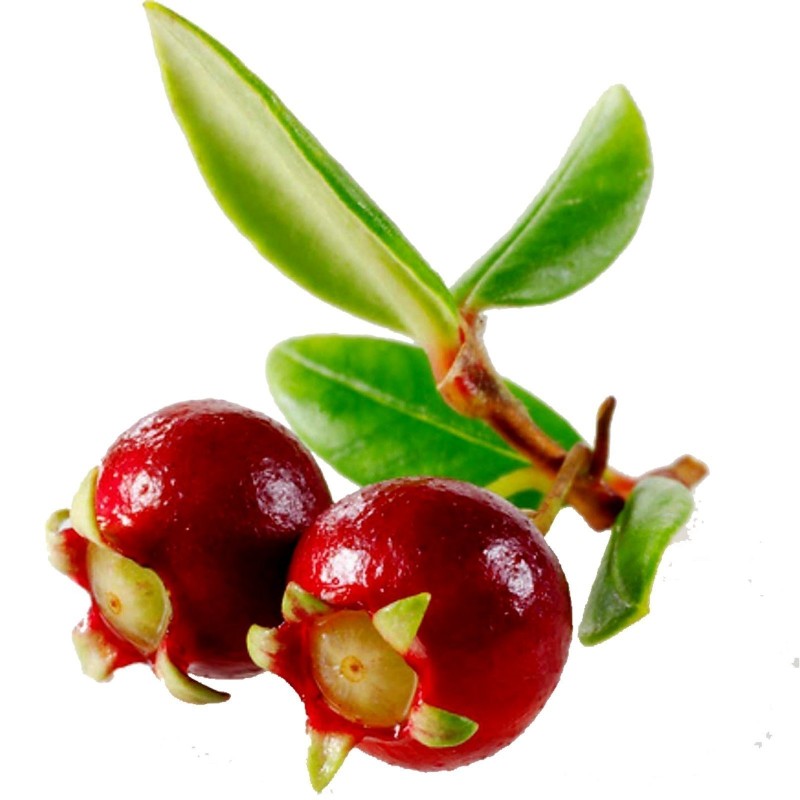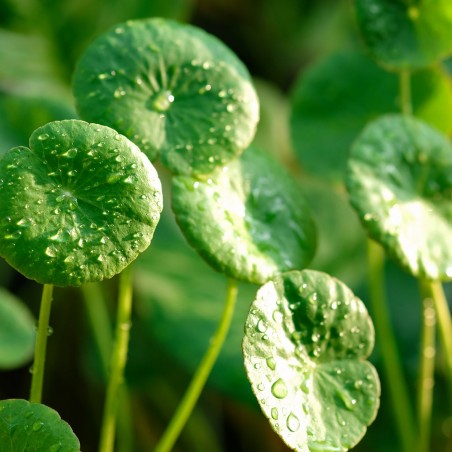
Chilean guava Seeds (Ugni molinae)
Chilean guava Seeds (Ugni molinae)
Price for Package of 5 seeds.
Ugni molinae, commonly known as Chilean guava, or strawberry myrtle, is a shrub native to Chile and adjacent regions of southern Argentina. The Mapuche Native American name is "Uñi". It is in the same
Chilean guava Seeds (Ugni molinae)
Price for Package of 5 seeds.
Ugni molinae, commonly known as Chilean guava, or strawberry myrtle, is a shrub native to Chile and adjacent regions of southern Argentina. The Mapuche Native American name is "Uñi". It is in the same botanical family as the Guava. The fruit is sometimes marketed as "Ugniberry", as "New Zealand cranberry" in New Zealand, and the name "Tazziberry" has been trademarked in Australia, but it is not a native plant to these countries.
Description
The Ugni is a shrub from 30 cm to 170 cm tall with evergreen foliage. In some exceptional cases the shrub can grow up to 3 m in height. The leaves are opposite, oval, 1–2 cm long and 1-1.5 cm broad, entire, glossy dark green, with a spicy scent if crushed. The flowers are drooping, 1 cm diameter with four or five white or pale pink petals and numerous short stamens; the fruit is a small red, white or purple berry 1 cm diameter. In its natural habitat; the Valdivian temperate rain forests the fruit matures in autumn from March to May.
It was first described by Juan Ignacio Molina (hence its name) in 1782. It was introduced to England in 1844 by the botanist and plant collector William Lobb, where it became a favorite fruit of Queen Victoria. It is also grown as an ornamental plant.
The fruit is cultivated to a small extent. The usage of the fruit in cuisine is limited to southern Chile where it grows. It is used to make the traditional liqueur Murtado that is made of aguardiente and sugar flavored by conserving murtas inside the bottle. It is also used to make jam and the Murta con membrillo
Cultivation
Ugni molinae is grown for its glossy evergreen foliage, (tolerant of close clipping), and for the profusion of small blooms, produced even on young plants. With shelter from cold winds, it will tolerate temperatures to -10ºC. Grow in full sun in a moderately fertile, well-drained soil enriched with leafmould or other well-composted organic matter. In pots, use a freely draining, medium-fertility, loam-based mix, water moderately when in growth, reducing as light levels and temperatures fall to keep just moist in winter at a minimum temperature of 5ºC. Repot every other year in early spring. Prune in spring to maintain size and shape and to remove frosted growth. Propagate by semi-ripe nodal cuttings in summer rooted in sand in a closed shaded frame or in a closed case with bottom heat. Also by basal cuttings of the current year’s growth taken in late autumn and rooted in a shaded frost-free frame, or by simple layering.
| Organic Seeds ? | Organic Seeds |
|---|---|
| Organic/natural ? | Organic/Natural: Yes |
| Edible ? | Edible |
| Pretreatment of sowing ? | Stratification needed: Yes |
| Life Cycle: | Perennial plant : Yes |
| Handpicked seeds ? | Handpicked seeds |
| Resistant to cold and frost ? | Cold resistant: to −15 °C |
| Suitable for growing in flower pot ? | Suitable for pot: Yes |
| Origin of seeds ? | Seeds imported from: Chile |
| Medicinal Plant ? | Medicinal Plant: Yes |


Your review appreciation cannot be sent
Report comment
Report sent
Your report cannot be sent
Write your review
Review sent
Your review cannot be sent
🌍 Worldwide Shipping from the EU
We ship worldwide from the European Union using registered air post with signature confirmation on delivery.
📦 Tracking Your Order
Log in to your account and go to Order History > Details to find your tracking number.
You will receive email notifications at every step — please check your spam/junk folder if you don’t see them.
Track your package via:
⚠️ Important Notices
Cash on delivery is not available.
Always provide a valid mobile number with country code when ordering (e.g., +365 456 7686 576).
Do not order to P.O. Boxes or if you cannot be home to sign for the package. We cannot leave parcels with neighbors.
If a package sent to a P.O. Box is lost or undelivered, you lose the right to a refund.
📦 Lost, Returned & Reshipping Packages
For customers in Brazil and Mexico:
We cannot refund packages lost or destroyed by customs.
If your package is returned, we will refund only the product cost — shipping costs are not refundable.
You must pay return postage (€2) and any costs for reshipping.
If a package is returned to us for any reason, you are responsible for paying the return shipping (€2) plus the cost to resend the package.
🚚 Shipment Delivery
Registered shipments require a signature from the recipient.
If your tracking shows the package is still at the origin post office, it means the package is in transit — please contact your local post office directly for updates.
We are not responsible for delivery times and cannot track shipments for you.
📅 Delivery Options & Estimated Times
Delivery Option Processing Time Notes Priority Delivery Ships in 1-7 business days Prioritizes order processing (not guaranteed faster delivery); delays possible during holidays (3-10 days) Secured Delivery Ships in 1-7 business days Available for orders up to €150; refund if lost Standard Delivery Ships in 7-10 business days More economical; delays possible during holidays (7-14 days) Estimated Delivery Time:
Within the EU: 3–20 days
Worldwide: 5–30 days
Example delivery times to the USA:
Delivered in 13, 17, 19, 22, or 27 days.Note: Delivery times depend on your location and the local postal system. COVID-19 may cause additional delays.
💰 Shipping Costs
Shipping and handling fees are calculated automatically during checkout based on the weight of the parcel and the destination country.
⏰ Order Processing Hours
We do not process or ship orders on Saturdays or Sundays.
💳 Payment Options
Bank Transfer (SEPA / IBAN / SWIFT-BIC)
Include your order reference in the payment description (e.g., "SGS-19811702"). Orders without payment within 7 days are automatically cancelled.PayPal
Payments accepted in Euros only. Please select Euros at checkout.Card Payment
For card payments, visit our other site: Exotic Seeds Store
We accept Visa, MasterCard, American Express, CB, Diners Club, Discover, China UnionPay, JCB, and Discover.
⚠️ Transaction Fees
Customers are responsible for any transaction fees. Please provide payment details to help us process your order efficiently.
📢 Final Notes
Before placing your order, please check our website for any special notices, holiday schedules, or specific conditions that may affect your purchase.
Related Products



















